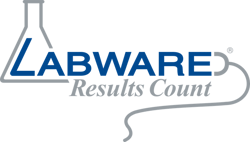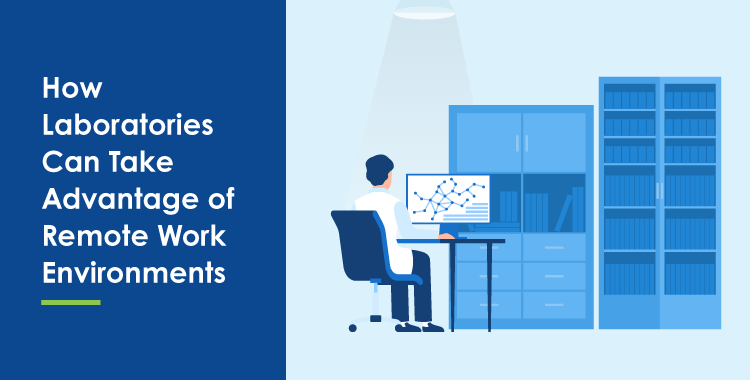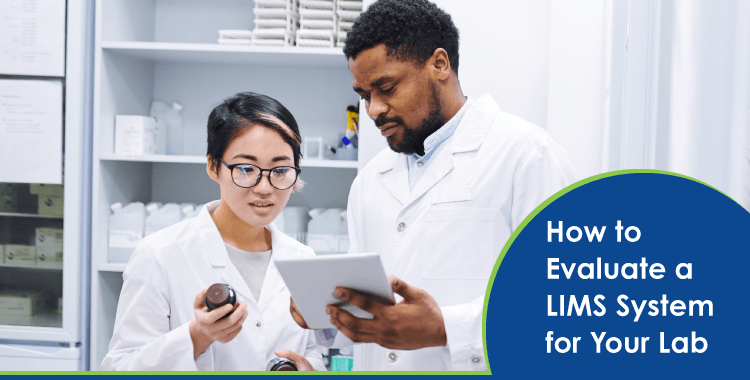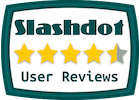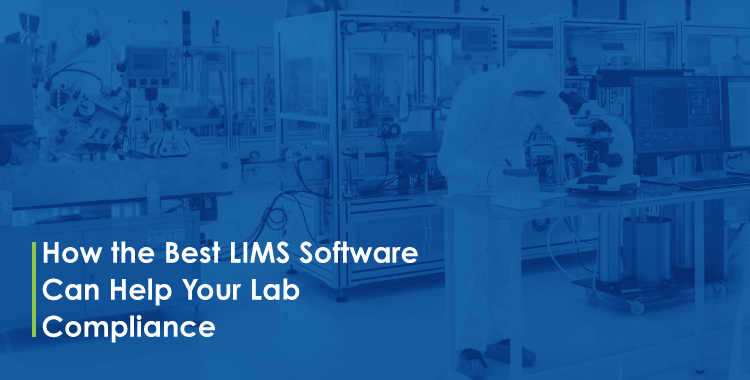
In the realm of LIMS software compliance, laboratory information management systems (LIMS) play a critical role in ensuring that laboratories adhere to regulatory guidelines and maintain data integrity. As the landscape of regulations continues to evolve, it is essential for organizations to understand and implement strategies for maintaining compliance within their LIMS environment.
This blog post will delve into various aspects of LIMS software compliance, discussing key factors such as understanding regulatory guidelines, choosing a compliant platform, standardizing data collection and organization methods, improving sample naming conventions and visualization tools, automating processes and audit trails, as well as exploring how LabWare's LIMS solution can simplify your lab's efforts towards achieving full compliance.
Understanding Regulatory Guidelines
As a lab manager, it is crucial to be familiar with the latest US FDA and UK MHRA guidelines for data integrity when examining LIMS software. These guidelines help ensure that labs maintain compliance with industry standards, which is essential as regulators increase their scrutiny into lab operations. By understanding these regulatory requirements, you can make informed decisions about selecting a laboratory information management system (LIMS) that meets your organization's needs while adhering to best practices.
Familiarity with Major Regulatory Bodies' Requirements
In order to effectively discuss compliance and install a secure LIMS in the lab, it is essential to comprehend the regulations stipulated by regulatory bodies such as FDA, MHRA, EMA or other applicable authorities depending on your location. Some key areas of focus include:
- Data security: Ensuring proper access controls are in place to protect sensitive information from unauthorized users.
- Data integrity: Maintaining accurate records throughout all stages of sample testing, analysis, reporting, storage, and disposal.
- Audit trails: Creating comprehensive documentation of all actions taken within the LIMS software environment for traceability purposes during audits or inspections.
- Validation procedures: Demonstrating that your chosen LIMS platform has been properly tested and verified according to established methodologies before implementation in your laboratory setting.
Ensuring Adherence to Data Integrity Principles
The foundation of regulatory compliance in laboratory information management systems lies in the adherence to data integrity principles. These principles, often referred to as ALCOA+ (Attributable, Legible, Contemporaneous, Original, Accurate, Complete), ensure that your lab's data is trustworthy and reliable throughout its lifecycle. By implementing a LIMS software solution that supports these key tenets of data integrity:
- Automated workflows: Streamline processes and reduce human error by automating routine tasks such as sample tracking or report generation.
- Electronic signatures: Provide secure authentication for users accessing sensitive information within the system while maintaining traceability.
- Data backups: Ensure regular backups are performed to safeguard against potential loss or corruption of critical laboratory records.
You can effectively manage your organization's risk exposure and maintain a strong foundation for ongoing regulatory compliance efforts. Remember that understanding these guidelines is just the first step; successful implementation requires careful planning and execution with an eye towards continuous improvement over time.
It is essential to understand the regulatory guidelines and their implications in order to ensure compliance with data integrity principles. By choosing an established LIMS platform, organizations can benefit from predefined workflows that are compliant with these regulations.
Key Takeaway: Lab managers must be familiar with regulatory guidelines and requirements set forth by governing bodies such as the US FDA and UK MHRA to ensure compliance with industry standards. Adherence to data integrity principles, including ALCOA+, is essential in selecting a LIMS software solution that supports automated workflows, electronic signatures, and regular backups for trustworthy and reliable laboratory records.
Choosing a Compliant LIMS Platform
As regulatory scrutiny increases, it is crucial for labs to choose a compliant LIMS software that can help them adhere to industry standards. Auditors are well-acquainted with major LIMS platforms, which have thorough documentation supporting the validation inherent in their configuration. Furthermore, SaaS-based LIMS platforms can come preloaded with predefined workflows, further simplifying compliance efforts while offering scalability and flexibility.
Advantages of Using Established LIMS Solutions
Selecting an established laboratory information management system (LIMS) offers several benefits when it comes to maintaining regulatory compliance. Auditors are knowledgeable about the features and needs of established LIMSs, thus making the auditing process simpler and more streamlined. Additionally, reputable providers continually update their software to ensure alignment with ever-evolving regulations such as those from the US FDA, UK MHRA, or other relevant authorities.
- Familiarity: Auditors recognize leading LIMS solutions and understand how they support data integrity principles.
- Updates: Established vendors regularly enhance their products in response to changing guidelines and industry best practices.
- Ease of use: Major platforms often provide user friendly interfaces designed for lab professionals without extensive IT backgrounds.
- User community: A large user base means access to valuable resources like forums or conferences where users share experiences on managing data effectively within the platform's framework.
Predefined Workflows Offered by SaaS-based Platforms
SaaS-based LIMS platforms can provide additional advantages when it comes to compliance. These cloud-hosted solutions often come with predefined workflows that adhere to industry best practices, reducing the time and effort required for configuration and validation. Moreover, they offer scalability and flexibility as your lab's needs change over time.
- Streamlined implementation: Predefined workflows simplify the setup process, enabling labs to get up and running quickly while ensuring adherence to regulatory requirements.
- Easier validation: With built-in processes designed for compliance, validating a SaaS-based LIMS system becomes more straightforward compared to custom-built alternatives.
- Faster updates: Cloud-hosted solutions allow vendors to roll out software updates seamlessly without disrupting laboratory operations or requiring manual intervention from users.
- Better support: SaaS providers typically offer comprehensive customer support services such as training resources or dedicated account managers who can help navigate any challenges related to managing data within their platform effectively.
In conclusion, choosing a compliant LIMS platform is essential in today's increasingly regulated environment. By selecting an established solution familiar with auditors' expectations and offering predefined workflows through a SaaS model, laboratories can ensure their data management practices align with industry standards while benefiting from improved efficiency and ease of use provided by modern day systems like LabWare's offerings.
Choosing a compliant LIMS platform is essential to ensure compliance with industry regulations and maintain data integrity. To further enhance the efficiency of laboratory operations, it's important to standardize data collection and organization methods.
Key Takeaway: To maintain regulatory compliance, labs should choose an established LIMS platform that is recognized by auditors and updated regularly to align with evolving regulations. SaaS-based platforms offer additional benefits such as predefined workflows for streamlined implementation and easier validation, scalability, flexibility, faster updates, and better support. Choosing a compliant LIMS platform is crucial in today's regulated environment for improved efficiency and ease of use while managing data effectively within the framework provided by modern-day systems like LabWare's offerings.
Standardizing Data Collection & Organization
In today's highly regulated laboratory environment, maintaining compliance involves standardizing the data collected and keeping accurate records of sample chain custody. Implementing a robust LIMS software like LabWare helps streamline this process by automating various aspects of laboratory work and ensuring consistent record-keeping practices.
Importance of Standardized Data Collection Methods
To achieve regulatory compliance, laboratories must adhere to strict guidelines regarding their data management processes. This includes collecting data in a standardized format that is easily accessible for auditors during inspections. By using a powerful laboratory information management system (LIMS), labs can ensure that all necessary information is captured accurately and consistently across different workflows.
- A well designed LIMS software solution enables users to define specific fields for capturing essential metadata about samples, tests, and results.
- Labs can also establish predefined templates or forms within the LIMS platform to guide technicians through the proper steps for entering relevant details into the system.
- This level of standardization not only ensures consistency but also minimizes errors associated with manual entry methods such as transcription mistakes or missing information.
Automation's Role in Enhancing Organization
Beyond standardizing data collection procedures, implementing an advanced LIMS platform allows laboratories to automate many tasks related to managing data effectively. Automation features provided by modern day systems significantly improve overall organization while reducing human error:
- Data import/export: A comprehensive LIMS solution can automatically import data from various sources, such as instruments or external databases, and export it to different formats for reporting purposes.
- Sample tracking: With the ability to track samples throughout their lifecycle within the lab, LIMS software ensures that all necessary information is maintained in a centralized location. This includes details about sample receipt, storage conditions, testing procedures performed on each sample, and final disposition.
- Data analysis & reporting: By automating data analysis processes using predefined algorithms or statistical models built into the system, labs can generate accurate reports quickly and efficiently. These reports can be customized according to specific regulatory requirements or internal quality control standards.
In summary, standardizing data collection methods and leveraging automation features offered by current LIMS platforms are essential components of maintaining compliance with industry regulations. Implementing a powerful laboratory information management system like LabWare not only streamlines these processes but also helps ensure that your lab remains compliant while improving overall efficiency.
Standardizing data collection and organization is essential to streamlining laboratory processes, as it ensures accuracy of results and eliminates the need for manual interventions. By improving sample naming conventions and leveraging visualization tools, laboratories can further optimize their operations by reducing complexity in decision making.
Key Takeaway: To maintain compliance in a regulated laboratory environment, it is crucial to standardize data collection and organization. Implementing an advanced LIMS platform like LabWare can help automate various tasks related to managing data effectively, ensuring consistency and minimizing errors associated with manual entry methods.
Improving Sample Naming & Visualization
Before implementing a powerful LIMS software solution, laboratories may struggle with inefficient naming schemes or lack effective visualization tools. The right software can provide advanced reporting capabilities on sample testing and usage patterns while recommending optimizations where needed to enhance overall efficiency.
Overcoming challenges posed by inconsistent naming conventions
Inefficient and inconsistent naming schemes for samples can lead to confusion, misinterpretation of data, and even regulatory noncompliance. By standardizing the way samples are named within your laboratory information management system (LIMS), you ensure that all staff members have access to clear, unambiguous information about each sample they work with. This not only reduces errors but also streamlines communication between team members.
- Create standardized templates: Develop templates for consistent sample names across different types of tests or projects in your lab.
- Avoid ambiguity: Use unique identifiers such as barcodes or serial numbers to differentiate between similar samples without causing confusion.
- Ease of use: Ensure that the chosen naming convention is easy for everyone in the lab to understand and follow consistently.
Leveraging visualization tools for better decision-making
Data visualization plays a crucial role in helping lab managers make informed decisions based on their laboratory's performance metrics. A robust LIMS platform should offer comprehensive reporting features that allow users to easily analyze complex datasets through interactive charts, graphs, and other visual aids. These tools enable managers to quickly identify trends, pinpoint areas needing improvement and track progress over time, ultimately leading them towards more efficient operations and improved compliance levels.
- Customizable dashboards: Choose a LIMS software that allows you to create personalized dashboards with relevant metrics and visualizations for each user's specific needs.
- Real-time reporting: Access up to date information on sample testing, usage patterns, and other key performance indicators (KPIs) through real-time reports generated by your LIMS system.
- Data-driven decision-making: Use the insights gained from data visualization tools to make informed decisions about resource allocation, process improvements, and overall laboratory efficiency.
Incorporating an advanced LIMS solution like LabWare, which offers both standardized naming conventions and powerful visualization tools, can significantly improve your lab's operations. By streamlining communication between team members and providing actionable insights into laboratory performance metrics, LabWare helps ensure compliance while enhancing overall efficiency in managing data within your organization.
By improving sample naming and visualization, laboratory processes can become more efficient while still ensuring compliance. Automating these processes with accurate audit trails will further improve the reliability of data collection and reporting for meeting regulatory requirements.
Key Takeaway: Implementing a powerful LIMS software solution can improve sample naming and visualization, which are crucial for efficient laboratory operations. Standardizing the way samples are named within your LIMS ensures clear communication between team members while data visualization tools enable managers to make informed decisions based on performance metrics. Incorporating an advanced LIMS solution like LabWare can significantly enhance compliance and efficiency in managing data within your organization.
Automating Processes & Audit Trails
In today's fast paced laboratory environment, automation plays a crucial role in ensuring efficiency and accuracy. By integrating automation features within your chosen compliant ready LIMS platform, you can capture more details than manual processes could ever achieve. This not only improves operational efficiency but also makes it easier to demonstrate adherence during audits.
Benefits of Automation in Laboratory Processes
- Faster turnaround times: Automated systems significantly reduce the time required for sample processing and data analysis, leading to quicker results and better decision-making.
- Error reduction: Human error is inevitable when managing data manually. Automating tasks like sample tracking and result reporting minimizes errors and ensures consistent quality across all lab operations.
- Better resource utilization: With automation handling routine tasks, lab personnel can focus on high value activities such as research or method development instead of spending their time on repetitive chores.
- Easier scalability: As your laboratory grows or experiences fluctuations in workload, an automated system can easily adapt without compromising performance or compliance standards.
The Importance of Accurate Audit Trails for Compliance
An essential aspect of maintaining regulatory compliance is having accurate audit trails that document every action taken within the laboratory information management system (LIMS). These records serve as proof that your lab follows industry best practices while managing data securely and efficiently. Some key benefits of comprehensive audit trails include:
- Demonstrating accountability: Detailed logs show regulators that you have a transparent process in place for managing sensitive information according to established guidelines such as the Health Insurance Portability and Accountability Act (HIPAA).
- Easing audit preparation: With a complete record of all activities, your lab can quickly and easily provide the necessary documentation during an audit. This reduces stress and ensures that you maintain compliance with minimal disruption to your operations.
- Enhancing data integrity: By capturing every change made within the system, automated audit trails help prevent unauthorized access or tampering while also ensuring that any errors are promptly identified and corrected.
Incorporating automation into your LIMS software not only focuses laboratory processes but also creates comprehensive, accurate audit trails essential for maintaining regulatory compliance. When selecting a LIMS platform like LabWare, ensure it offers robust automation features designed to simplify workflows, reduce errors, and improve overall efficiency in line with industry standards.
Automating processes and maintaining accurate audit trails can help organizations achieve compliance with regulatory standards. By utilizing LabWare LIMS software, companies can further simplify their efforts to remain compliant.
Key Takeaway: Automating laboratory processes with a compliant ready LIMS platform can improve efficiency, reduce errors and allow lab personnel to focus on higher-value activities. Accurate audit trails are essential for maintaining regulatory compliance by demonstrating accountability, easing audit preparation and enhancing data integrity. Incorporating automation features into your LIMS software is crucial in streamlining workflows and improving overall efficiency while adhering to industry standards.
Ensuring Compliance with LabWare LIMS Software
LabWare's LIMS software is designed to make compliance routine practice for any laboratory. The system follows standard operating procedures throughout its development cycle, and an internal ISO-trained auditor periodically reviews all documentation to ensure alignment with best practices. This ensures that your lab stays compliant while reaping the benefits of a powerful, flexible LIMS solution.
LabWare's Commitment to Maintaining Regulatory Standards
In order to maintain regulatory compliance, it is crucial for laboratories to choose a LIMS platform that has been developed in accordance with industry standards and guidelines. LabWare takes this responsibility seriously by following strict development processes and adhering closely to regulatory requirements such as those set forth by the US FDA and UK MHRA.
- Their development process includes rigorous testing, validation, and documentation stages.
- An internal ISO-trained auditor conducts periodic reviews of all project related documents.
- A strong focus on data integrity ensures accurate recordkeeping across various laboratory workflows.
How Using LabWare Can Simplify Compliance Efforts
Selecting a reliable LIMS platform like LabWare can significantly streamline your lab's efforts towards maintaining regulatory compliance. With built in features designed specifically for managing data in adherence with industry standards, you'll find it easier than ever before to demonstrate accountability during audits:
- Standardized Data Collection: LabWare LIMS software ensures that all data is collected, managed and stored in a consistent manner, which simplifies the process of demonstrating compliance during audits.
- Automated Processes & Audit Trails: By automating various laboratory tasks, LabWare helps create comprehensive audit trails that accurately reflect your lab's adherence to regulatory requirements. This not only improves operational efficiency but also makes it easier to demonstrate compliance during inspections.
- Predefined Workflows: The platform comes with predefined workflows for common laboratory processes, ensuring consistency across different labs while reducing the risk of human error. These workflows can be easily customized to meet specific needs or regulations applicable to your industry.
In addition to these features designed specifically for maintaining compliance, LabWare LIMS software offers numerous other benefits such as improved sample tracking and management capabilities, advanced reporting tools for better decision-making, and seamless integration with existing systems. With its commitment towards upholding regulatory standards combined with its powerful functionality and flexibility, LabWare provides an ideal solution for laboratories seeking a compliant ready LIMS platform.
Key Takeaway: LabWare's LIMS software ensures compliance with industry standards and regulatory requirements such as those set forth by the US FDA and UK MHRA. The platform offers features like standardized data collection, automated processes, audit trails, and predefined workflows to simplify compliance efforts during audits while improving operational efficiency. Choosing LabWare can significantly streamline a lab's efforts towards maintaining regulatory compliance while reaping the benefits of a powerful LIMS solution.
FAQs in Relation to Lims Software Compliance
Is LIMS Software Compliance with GMP?
Yes, Laboratory Information Management Systems (LIMS) software can be designed to comply with Good Manufacturing Practices (GMP). Compliance depends on the specific LIMS platform and its implementation. A well designed LIMS will adhere to regulatory guidelines, ensuring data integrity and traceability throughout the entire laboratory process.
Does LIMS Software Need to be Validated?
Laboratory Information Management Systems (LIMS) software must undergo validation to ensure they meet regulatory requirements and function as intended. Validation includes installation qualification (IQ), operational qualification (OQ), and performance qualification (PQ). This process confirms that a LIMS is reliable, accurate, consistent, and secure for use in regulated environments.
What Standards are Covered by LIMS Software?
A comprehensive LIMS solution covers various industry standards such as ISO 17025 for testing laboratories, FDA's 21 CFR Part 11 for electronic records management, EU Annex 11 for computerized systems used in pharmaceutical manufacturing processes, and CLIA regulations for clinical laboratories. The extent of compliance depends on the specific software implemented.
How Does LIMS Software Ensure Security?
Laboratory Information Management Systems (LIMS) software ensures security through multiple measures. Among the many include user authentication protocols like password protection or biometric access controls, role-based permissions restricting unauthorized users from accessing sensitive information, encryption of data during storage or transmission, audit trails documenting all actions performed within the system, regular vulnerability assessments and adherence to relevant ISO standards.
Conclusion
It is important to be familiar with major regulatory bodies' requirements, choose a compliant LIMS platform, standardize data collection and organization, improve sample naming and visualization, and automate processes and audit trails to achieve compliance.
At LabWare, we understand the importance of compliance in LIMS software and data management. Our commitment to maintaining regulatory standards makes us an ideal partner for organizations seeking simplified compliance efforts while managing their data effectively.
To learn more about how LabWare can help you achieve LIMS software compliance while optimizing your laboratory operations, contact us today.
